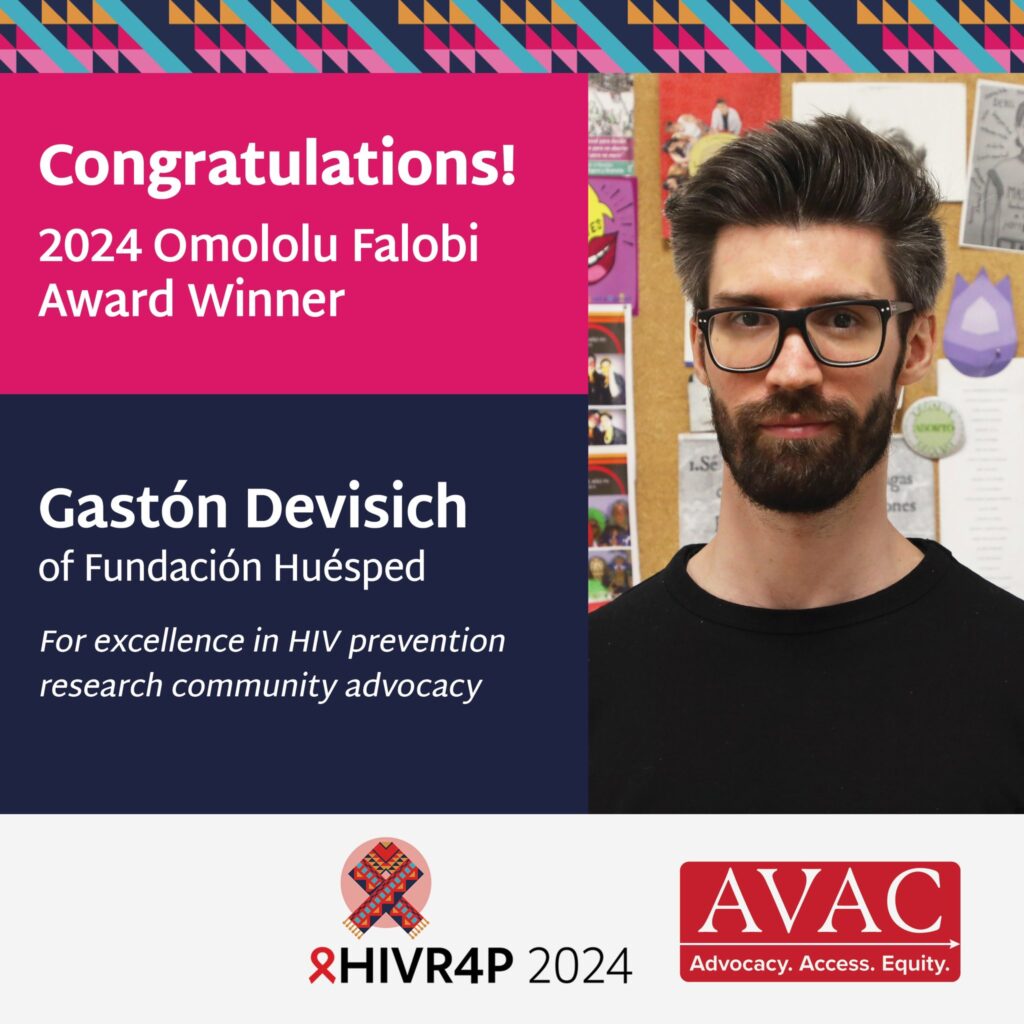This timeline shows the potential time points when the next-generation of HIV prevention options might find their way into new programs.
This file is also available to download as a PowerPoint file.
This timeline shows the potential time points when the next-generation of HIV prevention options might find their way into new programs.
This file is also available to download as a PowerPoint file.
This graphic shows currently available options for HIV prevention, newly approved and recommended treatment, and those in development.
Avac Event
The 5th HIV Research for Prevention (R4P) conference is being held in Lima, Peru from 6 to 10 October. Held every two years, HIVR4P is the only global conference to focused exclusively on biomedical HIV prevention, including AIDS vaccines, microbicides, PrEP, treatment as prevention and other approaches.
See below for conference highlights, recaps and announcements.


On 3 June 2024, AVAC hosted a webinar highlighting its Lab to Jab issue briefs on research and development, production and equitable global access to vaccines.
“[Our approach to access and equity] has to be intentional, not incidental, and it has to be empowered, not vulnerable.” — Dr. Jerome Kim, International Vaccine Institute
Panelists stressed an intentional, rather than incidental approach to ensuring global vaccine access and equity, going from pathogens to platforms, and having LMICs move from consumers to actors. They described ways to transform vaccine R & D from a financial imperative of pharmaceutical corporations into a system that addresses health needs through medical innovation. They underscored the importance of new, equity-based models to move low- and middle-income countries from being recipients of vaccine technology to co-creators from the very beginning of the R & D process. These models can work through in-country partnerships for vaccine development and production, shared technology and know-how, use of TRIPS flexibilities, intellectual property waivers and access conditions, and establishing a local production ecosystems.
The webinar featured Dr Jerome Kim, Director General of the International Vaccine Institute, Othoman Mellouk, Access to Diagnostics and Medicines Lead at the International Treatment Preparedness Coalition, and Dr Els Torreele, Founding Director of æqua, a recently created think tank on equity and economic justice for health. The panelists discussed international initiatives for vaccine development, the current state of vaccine research and access, and how they can be improved.
“Driving innovation at the regional R&D hubs means creating access to the technology platforms that can be adapted to new pathogens or the local health needs.” — Dr. Els Torreele, æqua
As of December 2023, only 56% of the world’s population received a complete series of COVID-19 vaccines, and only 28% had at least one booster dose. Many low- and middle-income countries (LMIC) were last in line to purchase overpriced vaccines. Lack of access to Mpox vaccines in Africa, where it is endemic, continues. These inequities are driven by the current profit-driven model and intellectual property barriers—but there could be a different way.
One major initiative discussed is being spearheaded by the International Vaccine Initiative (IVI), a UN-chartered organization dedicated to accelerating vaccine R&D for global health. Through its robust partnerships, and funding from the Gates Foundation, it has developed two approved vaccines (for cholera and thyphoid)–for less than $30 million each. The IVI also hosts the Advancing Vaccine End-to-End Capabilities in Africa (AVEC) Initiative, which aims to accelerate the development of the African ecosystem for vaccine R&D. Its aim is to support a powerhouse of continental manufacturing through a sustainable pan-African alliance that executes on the ground.
For more information, see:
“The problem is, until now, our countries are thinking mostly as consumers, not as actors. We only heard a little bit about some initiatives during COVID, because everybody woke up.” — Othoman Mellouk, International Treatment Preparedness Coalition
Total US dollars invested by each of the top 10 global funders of vaccine research in 2022.
This graphic shows the updated status of large-scale prevention trials through the end of 2024.
Avac Event
The new director of National Institute of Allergy and Infectious Diseases (NIAID), Dr. Jeanne Marrazzo joined AVAC Executive Director in conversation.
This graphic highlights the extensive and complex process of vaccine production, encompassing initial design, drug development, large-scale manufacturing, the creation of administration devices, and finally, distribution.
Excerpted From the Lab to Jab series.
mRNA technology is currently being studied for many different uses. Excerpted From the Lab to Jab series.
A detailed graphic showing the biological mechanisms by which mRNA vaccines work. Excerpted From the Lab to Jab series.